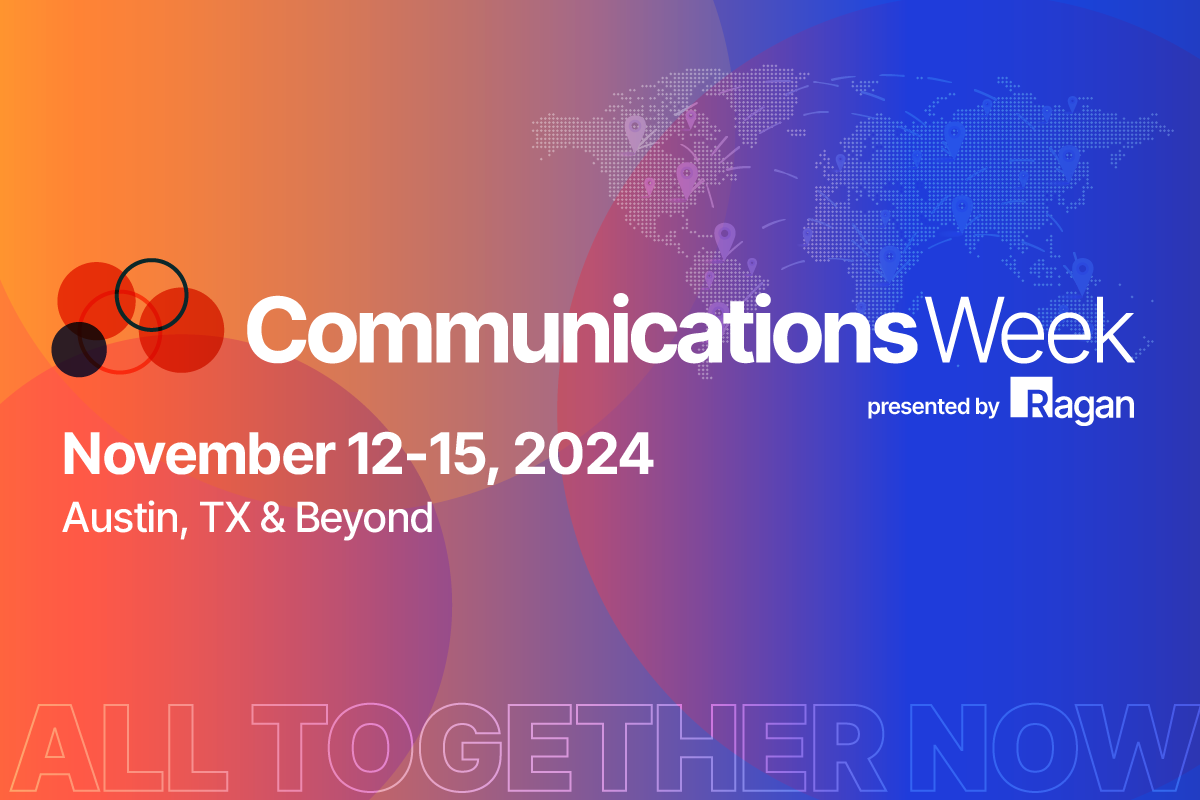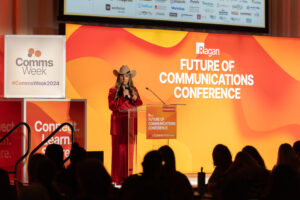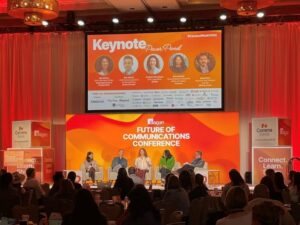CommsWeek Board Roundtable: From activators to advisors and prioritizing skills over experience
Top comms execs outline the biggest storylines for 2025.

We are just a month away from Communications Week, a worldwide celebration of the PR and communications industry hosted by Ragan Communications featuring more than 60 industry partners and 20 academic mentoring programs including NYU, Pepperdine and the University of Florida, all anchored by Ragan’s nearly sold out Future of Communications Conference in Austin on Nov. 13-Nov.15.
In preparation, we’ve asked our Communications Week Board of Advisors, composed of internal and external comms leaders at some of the biggest brands and agencies in the industry, to step out from behind the scenes for a roundtable discussion sharing their perspective on some of their biggest wins this year (talent, becoming strategic advisors), how they’re overcoming their biggest challenges (doing more with less, crisis and union comms, executive buy-in) and what they think the biggest storylines will be in 2025.
Roundtable participants included:
Sarah Plaster, Head of ESG Strategy, SAIC
Christina Frantom, Internal Communications Lead, Mercedes-Benz
Emily Graham, Chief Equity and Impact Officer, Omnicom
Brandi Boatner, Manager, Digital and Advocacy communications, IBM
Amy Jaick, U.S. Head of Communications, Freyr Battery
Sean Langston, Jr, Head of Internal Communications, Reddit
Nicole Neal, Vice President, Head of Internal Communications, Zurich North America
Meredith Klein, former Head of Consumer & Product Communications, Pinterest
Stacie Barrett, Director of Internal Communications, Domino’s
Steve Cody, CEO, Peppercom
Matt Kinsman, Chief Content Officer, Ragan Communications
Matt Kinsman: What’s had the most impact on your team this year?
Christina Frantom: We have been working hard to stay connected as a global team this year. In such a large organization it can be difficult to pinpoint the human interest stories that we like to elevate. In the U.S., we love reading about our Team Members in South Africa, Germany, Mexico and they love reading about what we are up to here in Alabama. The trouble is we are coordinating publication schedules and content across time zones and cultures. Sometimes things get lost in translation, literally.
Steve Cody: Unionization is a major issue, and we also have the November 4th elections approaching. How do we get such a diverse group—red state, blue state, white collar, blue collar—to collaborate? AI is also huge, especially in crisis planning. We represent a number of colleges and universities, and October 7th is huge in terms of crisis planning. That’s what comes to mind first and foremost, those four things.
Meredith Klein: Internal comms in an election year, in such a combative climate has become even more critical. There’s also misinformation, especially with AI-generated content. For communicators, we’ll have a lot of inbound and outbound work, clarifying and correcting the facts.
And then on the consumer side, I think with the increase in Gen Z and how they consume news, more and more what I’m pitching now is newsletters, Substacks and creators, and less of the traditional communications part, to be honest. If I get a social post or a newsletter inclusion or a Substack inclusion or a podcast, that’s huge. I think you’re going to see a lot of the CEOs start shifting towards that. Kory Marchisotto, CMO of E.L.F. Beauty, is already doing a really good job doing that.
Meredith, you mentioned non-traditional communications. Sean, you had some interesting thoughts on how the mission of comms is evolving.
Sean Langston, Jr.: This is something my team is deeply entrenched in as we plan for the year ahead. I say it all the time and I’ll say it again, communications professionals are in an environment where we have to do more with less. And with that comes the challenge of scale. How do we work towards becoming more of an advisory, enablement, and empowerment function and less of an activation function? How do we give folks the right tools and best practices to communicate more effectively without our participation, and how might that influence how we support our internal customers across the business?
My team is keen to drive more enablement than activation. We’re evolving to become more of a strategic advisory function (while also continuing to drive our core programming and services). The challenge is scaling and giving our partners the right tools, like standards, playbooks, templates, and tools so they can manage more moments on their own. This shift helps us focus more on strategy and less on day-to-day execution.
Stacie Barrett: Sean, I love that. We’re also focusing on making our people strategic partners. With so much change happening inside and outside our organization, it’s about equipping everyone with the right messaging and letting them guide the conversation.
Nicole Neal: In this era of shrinking teams, I have to keep reminding our people that we’ve never been this small of a team before and the need to break down silos has never been more important. We’ve got the support of our CEO and I think we need to present that united front with him to show how we are able to be that advisor for the organization.
Christina: I’ll follow up with how we did it here very recently at Mercedes–we asked our global marketing and sales teams to support us with process and content and they responded beautifully. Something as simple as making our extensive brand guidelines available online in an interactive format really made a huge difference. So, comms and PR folks, look at your marketing and sales people for some of that additional support.
With reduced headcount and shifting priorities, how are you going to market?
Amy Jaick: Discipline is key, especially with fewer resources. We created a scoring system to prioritize opportunities, so we don’t waste time on things that don’t meet our criteria. For example, we cut down on speaking engagements unless they aligned with our goals. Putting in place this criteria that everybody agrees with across the organization is a good way to both help all of us maximize our impact and our time and gives us cover when we have to say no without making it a personal issue.
Christina: Headcount is always a real challenge. We have Team Members from all over the world at our disposal, so we work hard to get the right person in the right role. It isn’t always easy, but I love it when we get to hiring more experienced communicators. We have a great senior team. It’s still small, but it’s really broad in terms of its expertise. And I’m grateful for it.
Are you hiring different types of people, with skills outside traditional comms?
Sean: I’m not actively hiring right now, but if I were, I’d immediately focus on a specific set of soft skills vs. traditional comms experience. Internal comms has been elevated in such a way over the past few years that traditional communicators might not necessarily be the best fit for today’s challenges. Problem-solvers who can build relationships and skillfully navigate the complexities of nonhomogeneous organizations and all of the external impacts can make a big impact. We have to find a path to unlock scale by giving people the tools to get a ‘B-’ on their own. And I think in this communications economy, we’ve got to be okay with the B- as a self-service output. Our value comes in getting deeper into the high-leverage work that demands an A+.
Nicole: I hired two people who brought differentiated skills. One had both internal and external communications experience, plus a podcast. Another brought a desire to work with measurement and technology, which has helped us tell our story.
Sarah Plaster: Communication skills are foundational, but without critical thinking and problem-solving abilities, the volume of work will overwhelm you. Leaders need to help prioritize their teams’ work, not just hand it off and say, “figure it out.”
What do you think will be the biggest storyline for comms next year?
Christina: The industry is overlooking a shift in DE&I. We’re one incident away from a renewed focus on how businesses integrate DE&I at every level. With AI, the question will be who owns content. AI should help us work more efficiently, but leaders are still stuck on paying for time instead of ideas.
Emily Graham: DE&I continues to be a topic of trepidation. In the U.S., many organizations may be waiting until the outcome of November’s presidential election to determine their next step. Instead of waiting, we need to overcommunicate internally and audit our DE&I strategy before the election results are in. There’s a lot of external noise, but communicators should ensure their company’s DE&I stance is clear. Election Day doesn’t matter if your organization is committed to DE&I. Sure, pivots and elements of a DE&I plan will evolve, but corporate leaders of DE&I need to put their strategy in place right now. I agree on AI completely.
The other thing that I’m starting to hear is that many employees, either early or mid-level in their career, are really worried about the economy and cost of living. We need to expand our focus on DE&I to include socio-economic diversity among our employees. I don’t know if that’s coming up for anyone else, but we’re even starting to have people say, ‘I can’t afford to go on business travel and not be reimbursed for 10 days.’ I think that DE&I, communicators and those focused on business operations like HR need to work together and get more in tune with the financial impact that actions like business travel may have on the people we work with and the communities we serve.
Sarah: There’s a lot of research on DE&I out there. I just read one from Gartner that 70% of corporations are not changing anything about their DE&I programs and an even higher percentage of CEOs are committed to it. But the challenge is the noise, right? We all know that diversity sparks innovation and we’re an innovation and a tech company. Shame on us if we don’t double down. And in fact, our executive leadership group actually used the term ‘double down’ on DE&I and we haven’t received any external pressure. But I think it’s really battling those voices out there that may not really speak the truth on what diversity brings to a corporation.
Stacie: We had a group of Gen Zers educate us on where they want to work and what they want to buy. If your team doesn’t reflect your customers, you’re in trouble. Communicators need to tell that story to leadership in a way that resonates.
Let’s end on a high note. What were your biggest wins this year?
Stacie: Hiring a great team member who can speak to multiple generations and running successful storytelling events and focusing on sharing data and metrics to be more visible to both my customers internally and my franchise community. We’re a franchise organization and we need to make sure that we are driving results so that we can continue to grow our team and show our impact.
Christina: For us, it was definitely the cutting-edge tech and visionary concepts in our vehicles. We had the MBUX Virtual Assistant release as well as a beautiful concept CLA Class that is transforming the relationship our customers have with their Mercedes-Benz. Not to mention the in-car gaming developments on the horizon. It has been a fun year working on some really exciting projects.
Steve: Learning and development–junior and middle level people were asking for more guidance on how they can win new business. We ran a speed-dating-style learning event for junior and mid-level staff to practice winning new business. We gave our people the elevator pitch for Peppercomm and the determinant of success or failure was getting the client, the prospect, to agree to allow us to connect with them on LinkedIn. It was a huge hit, and Brandi was a big part of that.
Brandi Boatner: My biggest win was giving back to the industry. Helping others develop professionally is why we do what we do.
Be sure to check the main Communications Week hub for more updates on additional #CommsWeek events in the weeks ahead. A few passes are still available to Ragan’s nearly sold out Future of Communications Conference in Austin on Nov. 13-Nov.15.






